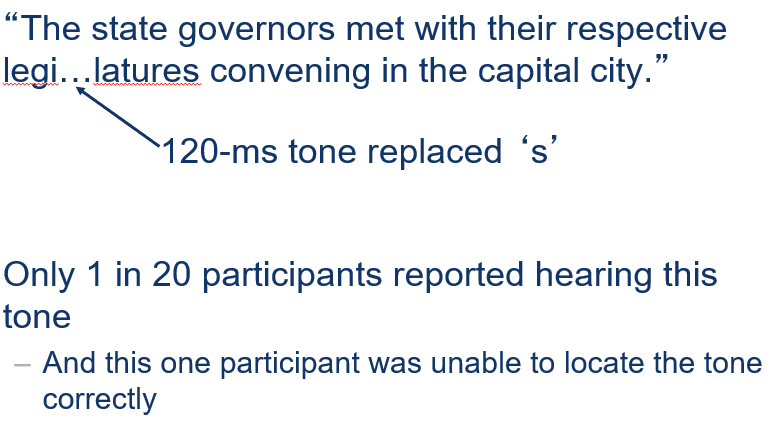Week 5- Pattern Recognition
1/18
There's no tags or description
Looks like no tags are added yet.
Name | Mastery | Learn | Test | Matching | Spaced |
|---|
No study sessions yet.
19 Terms
what is the primary visual cortex also called?
striate cortex
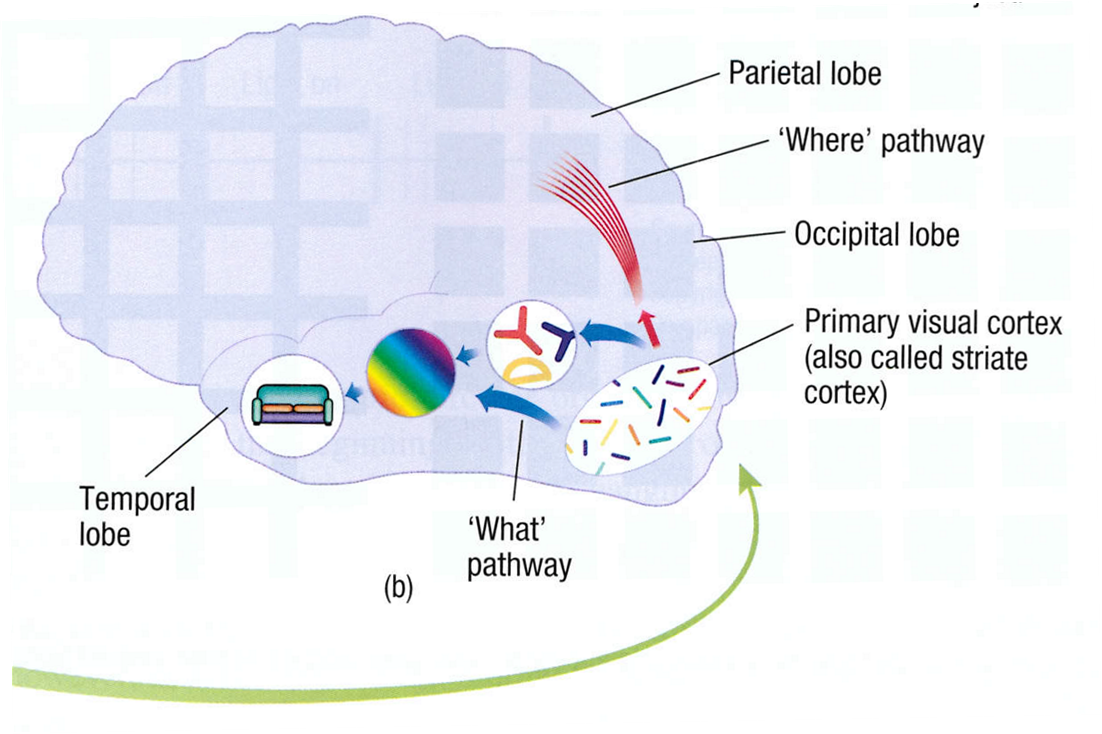
what is agnosia
Impairment of object recognition ability
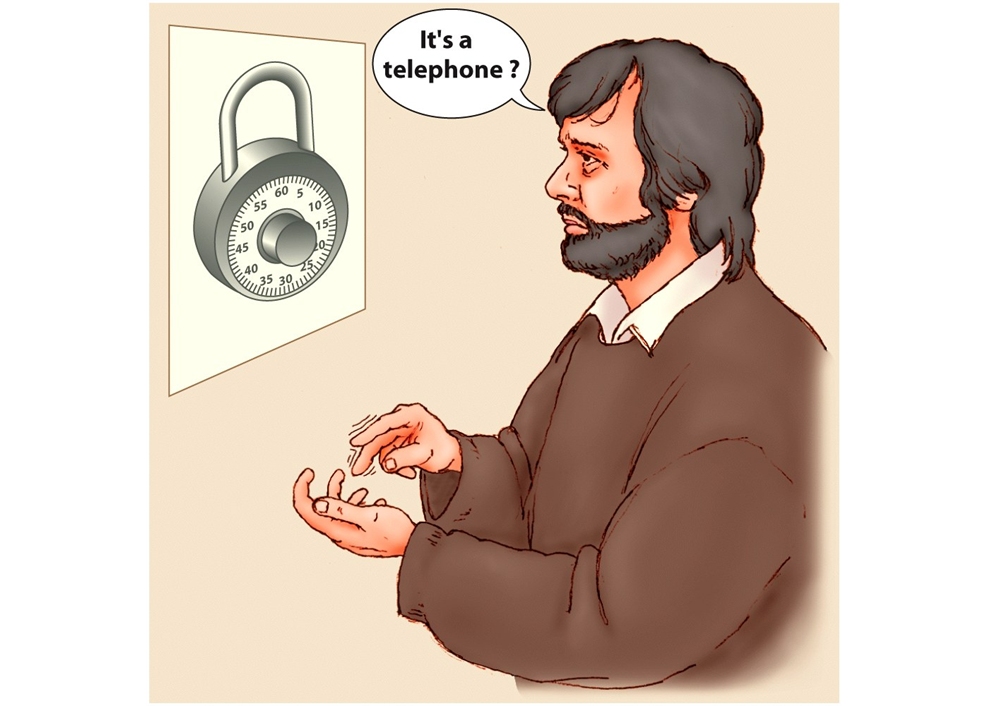
•Inability to recognise objects
•In agnosia, processes such as colour, shape, and motion perception are intact
•Recognising a whole object is more than just recognising its parts
what are the two cortical pathways for vision
•Ventral pathway
–Occipital à temporal
–Processes information about object appearance and identity
–Important for object perception
•Dorsal pathway
–Occipital à parietal
–Processes spatial information about objects
–Important for guiding action
Optic ataxia
•Optic ataxia
–Intact object recognition
–Inability to use visual information to guide action
–Associated with lesions in the dorsal pathway (typically in the parietal cortex)
lady trying to grab hammer, Optic ataxia concerns impairments in using visual information to guide motor movements.
Face Perception
-requires holistic processing much harder to recognize isolated parts of faces? compared to maybe houses where a red door would stand out
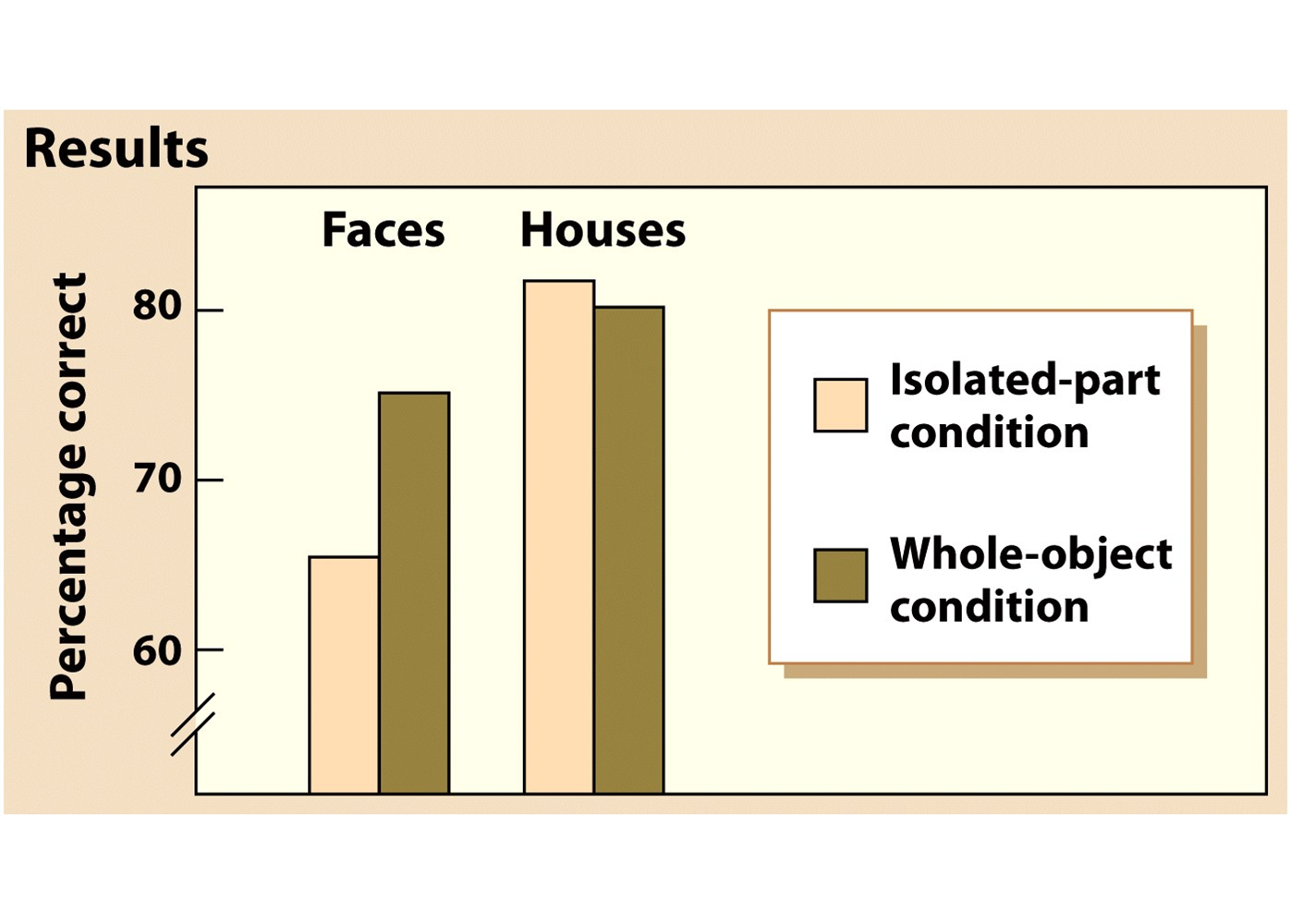
what are the Gestalt Principles
similarity
closure
good continuation
proximity
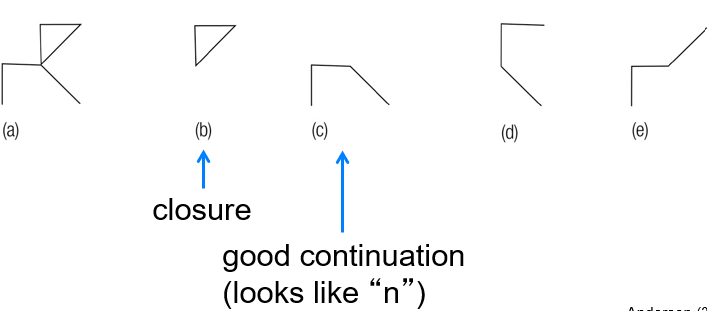
We tend to recognize different stimuli as the same object irrespective of what?
•We tend to recognize different stimuli as the same object (e.g., letter “A”) irrespective of superficial variations
•Gestalt principles don’t really help explain why
•Another theory of pattern recognition, template matching, doesn’t explain this either

Template -matching model
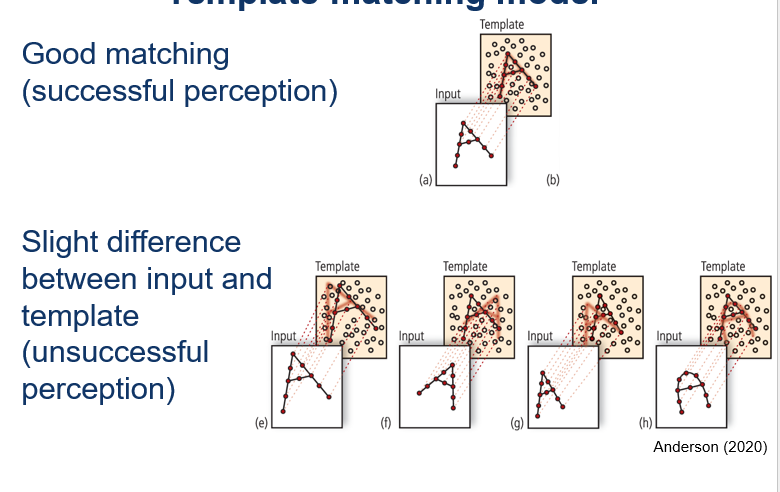
Feature analysis
•A visual pattern is perceived as a combination of elemental features
–Selfridge’s pandemonium model
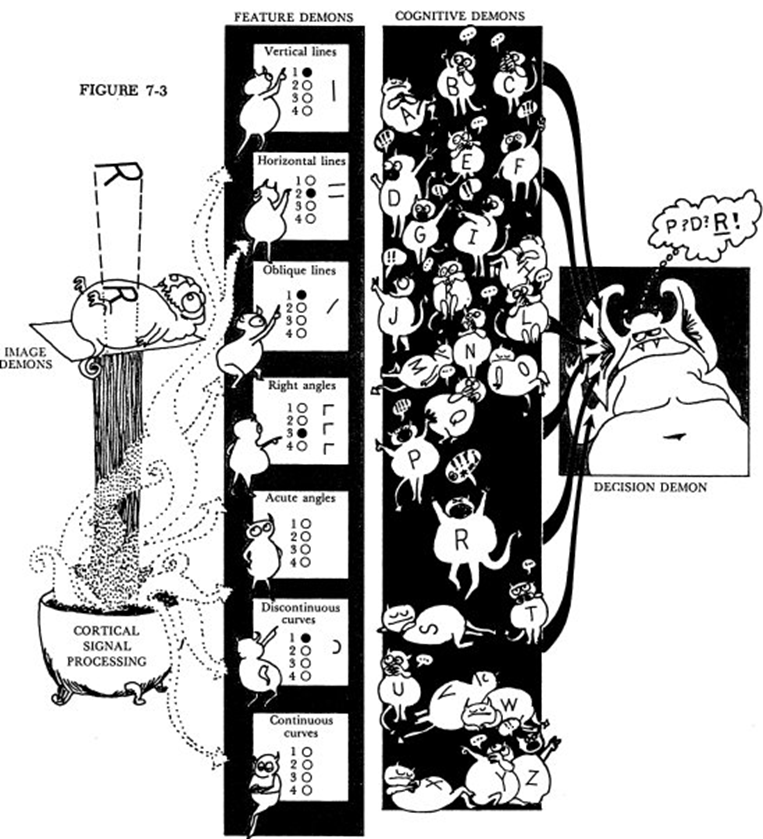
feature analysis pic

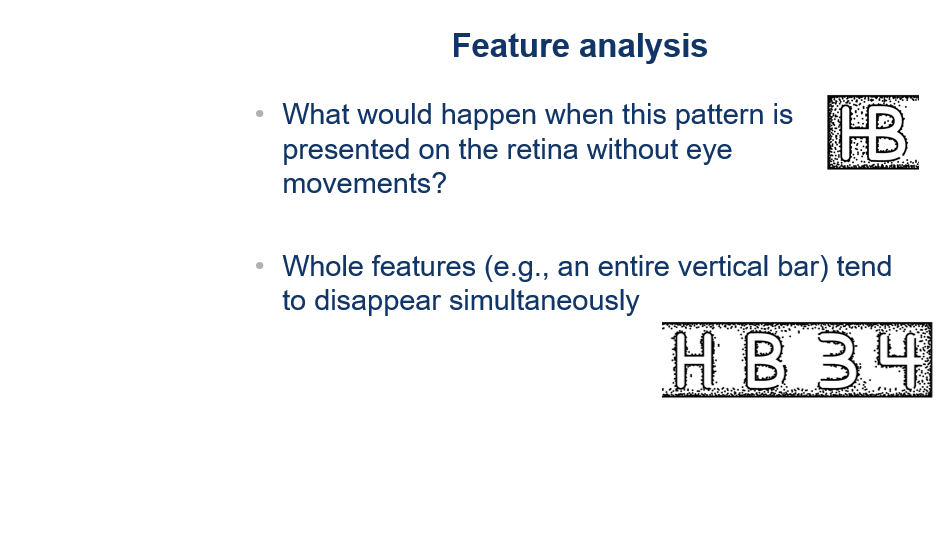
#idk probs watch the lecture
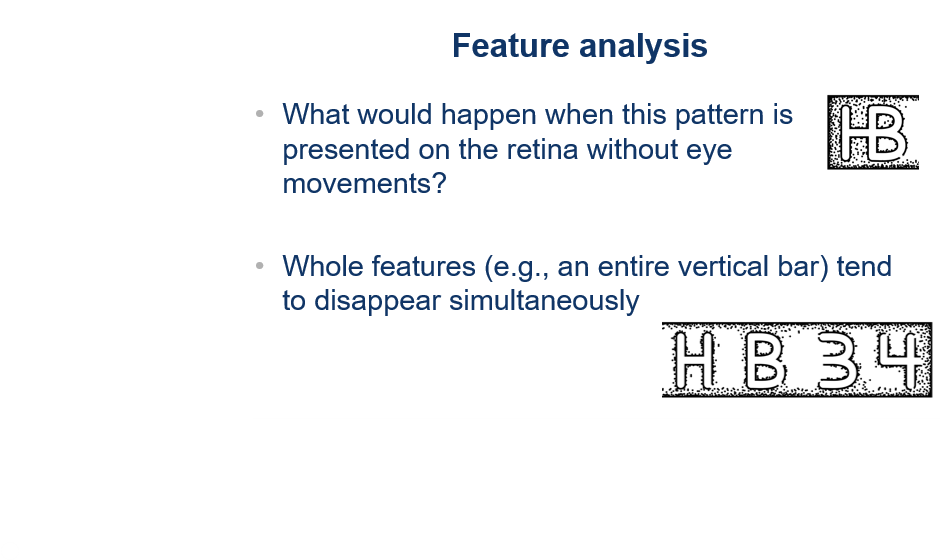
Recognition-by-component theory
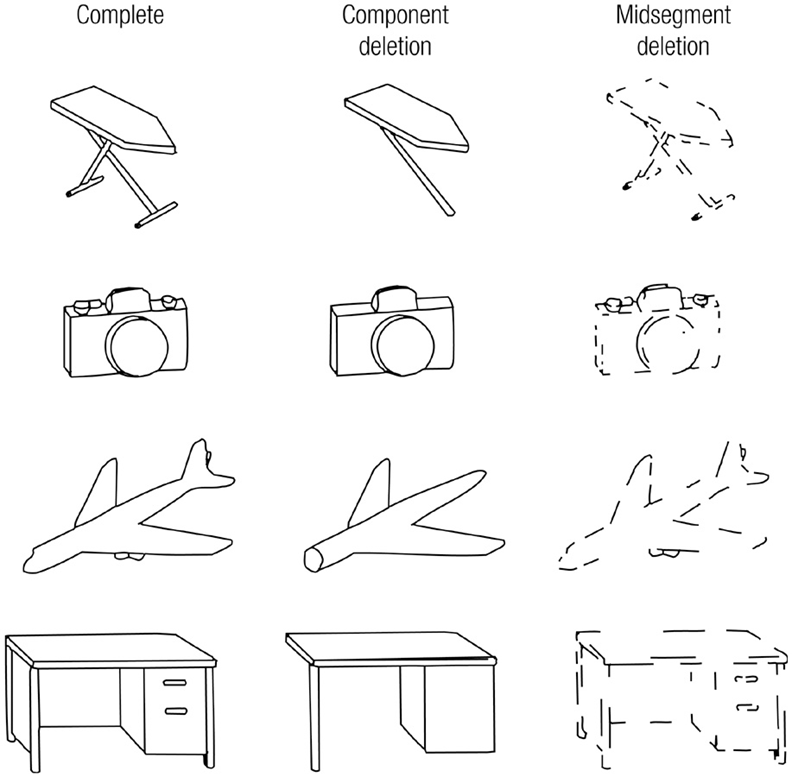
•Similar mechanisms have been proposed for 3-D object recognition
•An object is first segmented into a set of basic sub-objects (called geons), and then recognised as a pattern composed of geons


•Neurons in higher-order visual areas respond to WHAT
•Neurons in higher-order visual areas respond to increasingly complex patterns
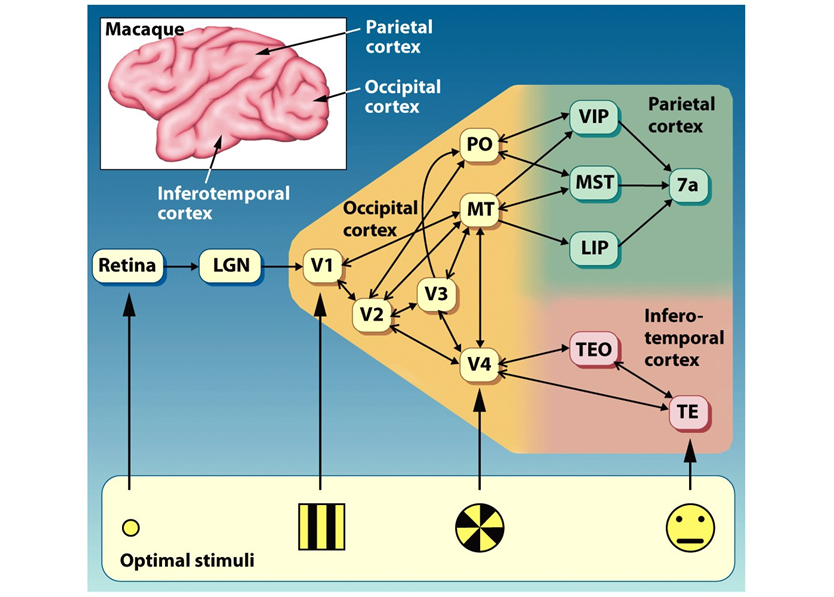
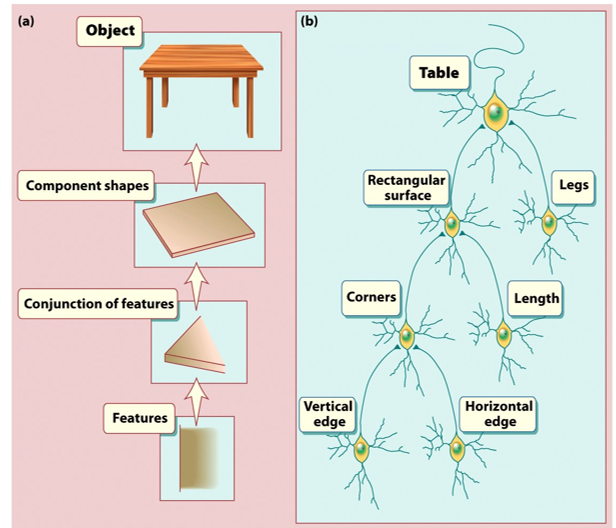
•If we keep going down the visual information processing pathway, can we eventually find a cell that responds to a very, very, very specific stimulus?
•“Grandmother cell” hypothesis
•“Grandmother cell” hypothesis continued and weakness
•Weaknesses of the grandmother cell hypothesis
–The final percept of an object is coded by a single neuron
•However, each neuron’s firing is not so reliable
•If that neuron is lost, our perception of the corresponding object would be lost
–Perception of novel objects cannot be explained well
–Flexibility of object recognition cannot be explained well
Object recognition results from the firing of an…
•However…
–More recent evidence suggests that grandmother-cell-like neurons might exist (Quiroga et al., 2005)
–But not necessarily in the visual object recognition system per se
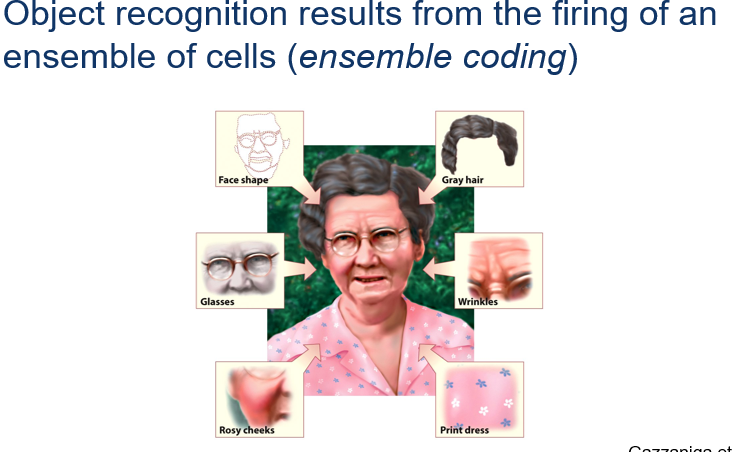
top-down and bottom-up processing
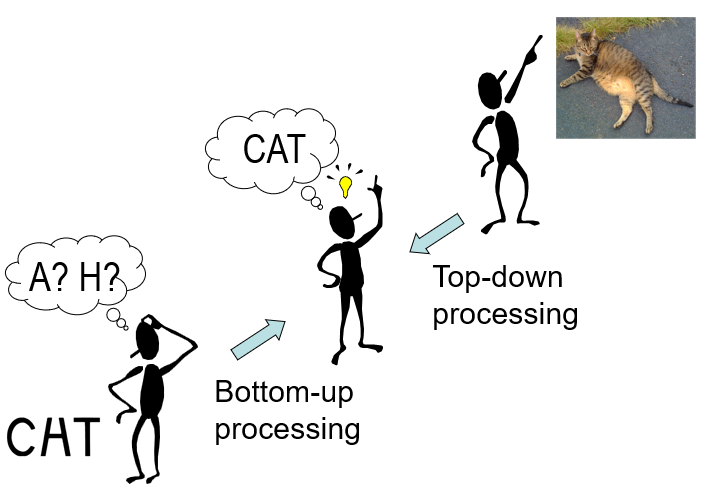
Word-superiority effect
The core finding is that it is easier to identify a letter if it is within a word (like "K" in "WORK") compared to a single, isolated letter ("K") or a non-word string (like "XOWK").

Phoneme-restoration effect
The phoneme restoration effect is a perceptual phenomenon where the brain fills in missing sounds in speech, making them seem to be there even when they are not. This effect, first demonstrated by Warren (1970), allows listeners to understand speech in noisy environments by using surrounding words and sentence context to restore missing or replaced phonemes. For example, a listener might "hear" the missing /s/ in the word "legislatures" if the sentence context supports it.
